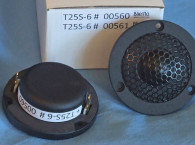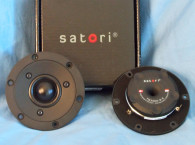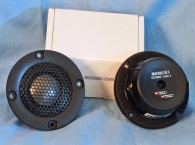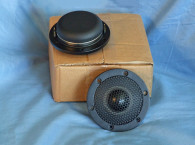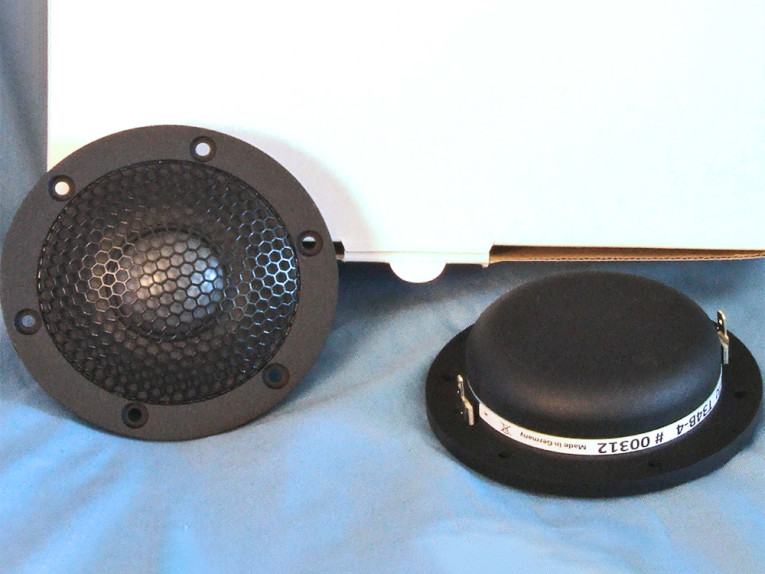
It is no secret that beryllium diaphragms have made their way into the high-end and pro-sound speakers, including products from manufacturers such as Magico, TAD, JBL, Focal, Paradigm, Rockport, Revel, EgglestonWorks, and Estelon to drop a few well known names. Given that, I was definitely excited to find that BlieSMa’s second release was a beryllium version of the T34A. Like the T34A, the recently released T34B-4 high-end beryllium dome tweeter has a substantial feature set that includes:
• A 34 mm beryllium dome with a 32 kHz first breakup mode
• Extremely low moving mass (Mms = 0.26 grams) for better transient response and higher output
• Fully saturated neodymium motor with copper sleeve shorting ring for low nonlinear and modulation distortion
• 3 mm linear excursion and large pole vent for undistorted low-frequency operation
• Narrow surround for less “soft dome” coloration
• Flush-mounted surround and rear-mounted magnet system for flat frequency response and wide off-axis response
• Underhung voice coil wound with CCAW wire on a titanium former
• Flexible and lightweight tinsel leads from Denmark
• Cast-aluminum powder-coated faceplate
• Gold-plated terminals
• Extremely wide frequency range 1.3 kHz to 40 kHz
• 97.5 dB sensitivity




I used the LinearX LMS analyzer to produce the 300-point impedance sweep shown in Figure 1. The T34B-4 impedance resonance occurs at a moderately low 737 Hz (factory spec is 790 Hz). With a 3.2 Ω DCR (Re) (factory spec is 3.3 Ω), with the minimum impedance for this tweeter measuring 3.47 Ω at 10.6 kHz.
With the impedance testing completed, I recess-mounted the T34B-4 tweeter in an enclosure that had a baffle area of 17” × 8” and measured the on- and off-axis frequency response. The Loudsoft FINE R+D analyzer and GRAS 46BE 1/4” microphone (courtesy of Loudsoft and GRAS Sound & Vibration, respectively) were set up to measure the 200 Hz to 40 kHz frequency response at 2 V/0.5 m normalized to 2.83 V/1 m. Data was then taken with sweeps at 0°, 15°, 30°, and 45°. Figure 2 shows the on-axis response of the T34B-4. The on-axis curve measured ±2 dB from 1.5 kHz to 18.5 kHz, with the beryllium breakup mode at peaking at about 41 kHz.
Figure 3 gives the on- and off-axis response of the T34B-4. Figure 4 shows the off-axis curves normalized to the on-axis response. Figure 5 shows the CLIO 180° polar plot (measured in 10° increments with 1/3 octave smoothing). The two-sample SPL comparison is illustrated in Figure 6, indicating the two samples were closely matched to within 0.75 dB throughout most of its operating range, with some minor 1 dB variation at 6 kHz.
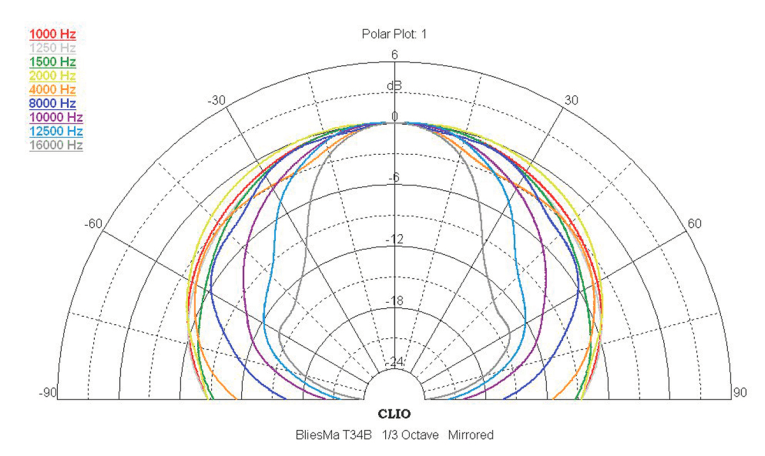
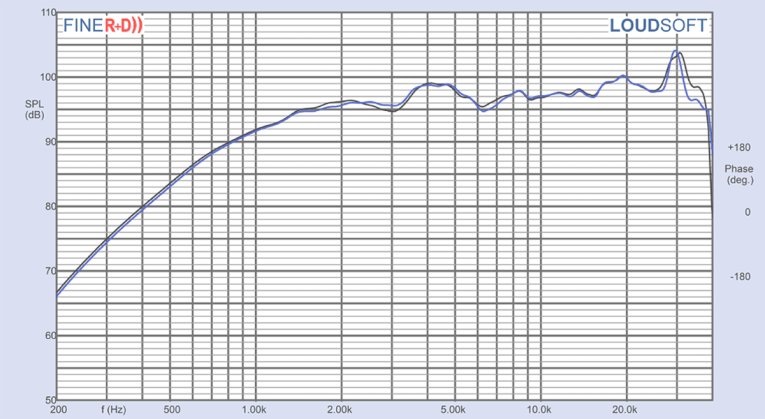

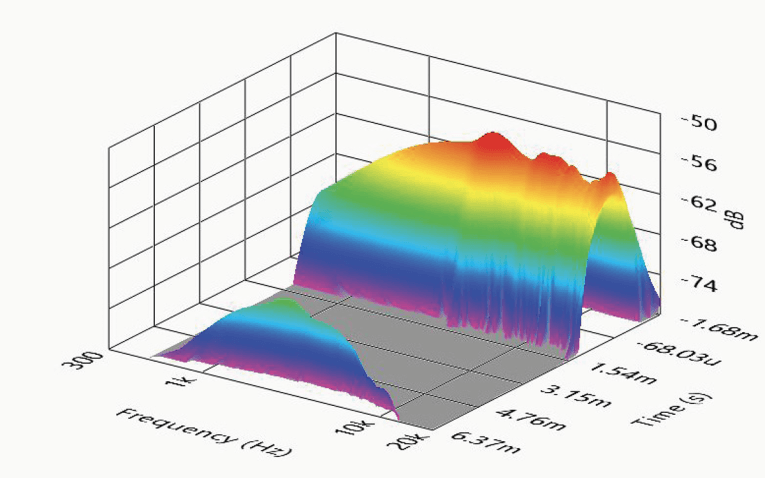

The next test procedure I used was to initiate the Listen, Inc. AudioConnect analyzer along with the Listen SCM-2 (now superseded by the SCM-3) 1/4” microphone (provided courtesy of Listen, Inc.). With SoundCheck 16, I was able to measure the impulse response with the tweeter recess mounted on the test baffle. Importing the impulse response into the Listen SoundMap software resulted in the cumulative spectral decay plot (CSD) waterfall plot shown in Figure 7. Figure 8 used the same data to produce the Short Time Fourier Transform (STFT) displayed as a surface plot.
For the last objective test, I set the 1 m SPL to 94 dB (1.77 V) using a pink noise stimulus (SoundCheck has a built in generator and SLM utilities for this purpose), and measured the second (red curve) and third (blue curve) harmonic distortion at 10 cm, which is depicted in Figure 9.
As his second product to be released to the OEM driver market, Malikov is definitely developed some very compelling high-end tweeters. The fit, finish, and overall build quality look are first rate, befitting of a product intended for the high-end speaker market, not to mention the 1.5 mm Xmax (3 mm peak-to-peak)! For more information, visit the BlieSMa website at www.bliesma.de VC
This article was published in Voice Coil, March 2019.




